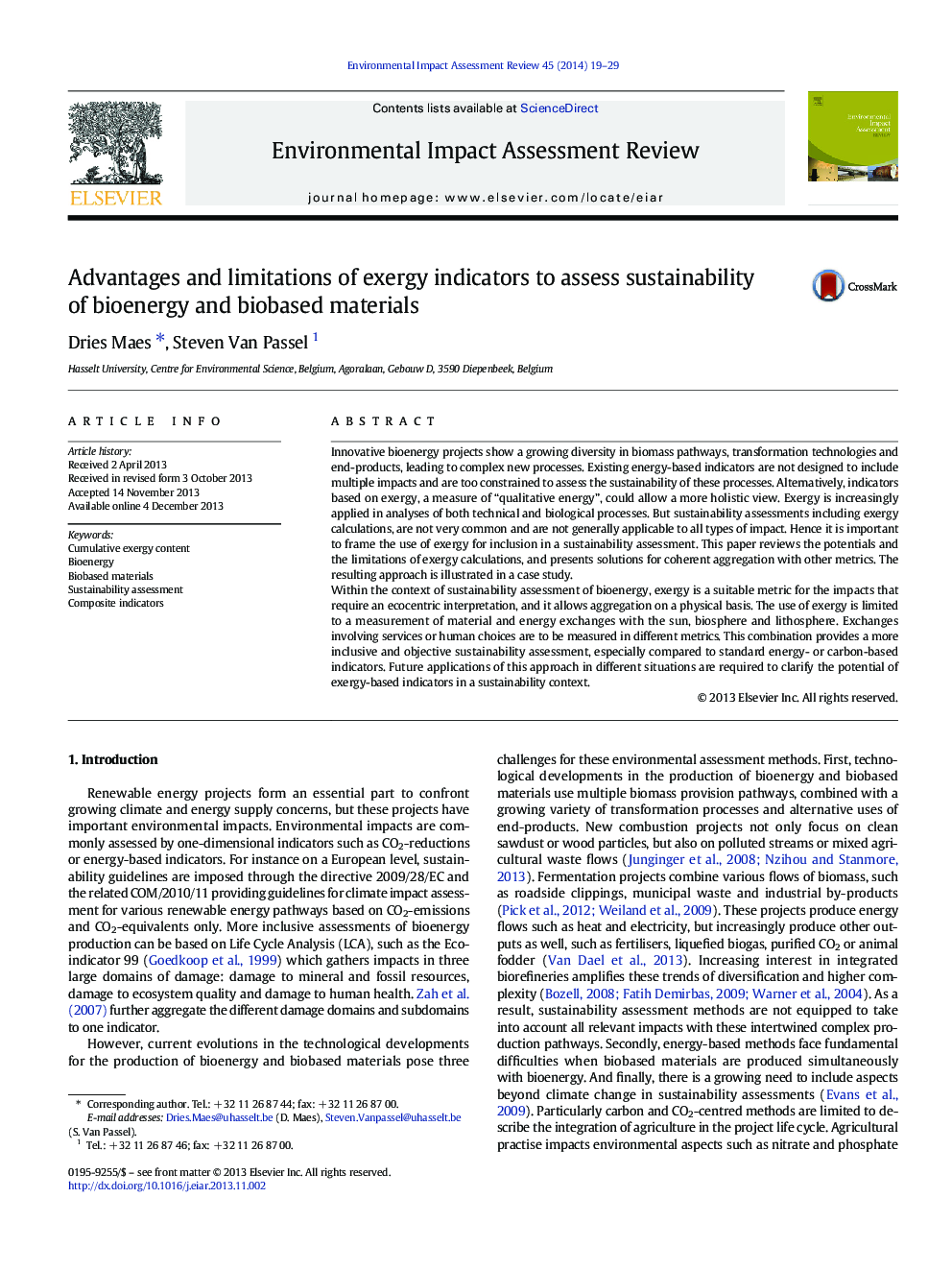| Article ID | Journal | Published Year | Pages | File Type |
|---|---|---|---|---|
| 1052727 | Environmental Impact Assessment Review | 2014 | 11 Pages |
•Innovative bioenergy projects require more advanced sustainability assessments to incorporate all environmental impacts.•Exergy-based indicators provide solutions for objective and robust measurements.•The use of exergy in a sustainability assessment is limited to material exchanges, excluding exchanges with society.•The combination of exergy-based indicators with other indicators is very appropriate.•But this is only rarely applied.
Innovative bioenergy projects show a growing diversity in biomass pathways, transformation technologies and end-products, leading to complex new processes. Existing energy-based indicators are not designed to include multiple impacts and are too constrained to assess the sustainability of these processes. Alternatively, indicators based on exergy, a measure of “qualitative energy”, could allow a more holistic view. Exergy is increasingly applied in analyses of both technical and biological processes. But sustainability assessments including exergy calculations, are not very common and are not generally applicable to all types of impact. Hence it is important to frame the use of exergy for inclusion in a sustainability assessment. This paper reviews the potentials and the limitations of exergy calculations, and presents solutions for coherent aggregation with other metrics. The resulting approach is illustrated in a case study.Within the context of sustainability assessment of bioenergy, exergy is a suitable metric for the impacts that require an ecocentric interpretation, and it allows aggregation on a physical basis. The use of exergy is limited to a measurement of material and energy exchanges with the sun, biosphere and lithosphere. Exchanges involving services or human choices are to be measured in different metrics. This combination provides a more inclusive and objective sustainability assessment, especially compared to standard energy- or carbon-based indicators. Future applications of this approach in different situations are required to clarify the potential of exergy-based indicators in a sustainability context.
